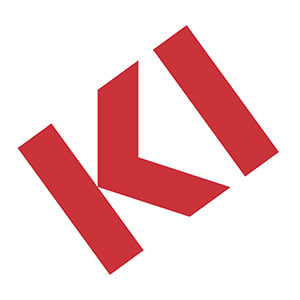Establishing Commonalities & Collaboration in Healthcare

Imagine you’re headed to your doctor’s office for a routine check-up. Think about the typical process as you go through that patient experience. How many healthcare employees do you interact with at your visit? What you probably don’t realize in that very standard interaction with your provider is the diversity of employees working in that healthcare environment.
The receptionist is a loyal employee who has worked for your provider for 25+ years. The nurse is fresh out of Nursing School and eager to put her newly acquired skills to the test. Your doctor is seasoned, having built a strong practice through professional connections, sacrifice and hard work. There are also those you don’t see – lab technicians, office staff, IT personnel, the list goes on.
For the first time, four generations are working together in that office. From Traditionalists and Baby Boomers to Generation X and Millennials, the healthcare workforce could not be more diverse in terms of age. It’s common knowledge that there are some pretty strong stereotypes around each of these age groups and how they work.
With so many generations working together, do these stereotypes hold true and are they affecting the organizational culture or the patient care experience?
Deciphering Generational Differences
It’s important to first identify what drives and motivates these four generations. Work styles are largely determined by circumstance – personal beliefs, values, education and life events. In 2014, the America Hospital Association published the report, “Managing an Intergenerational Workforce: Strategies for Health Care Transformation”. AHA's report breaks down the personal, cultural and monetary drivers of each generation. Below is a summary of each generation:
- Traditionalists – Driven by loyalty, Traditionalists weathered the Great Depression, witnessed WWII and our first foray into space. Given the uncertainty of their upbringing, they are frugal and look for security. Most do not have formal higher education. They value a hierarchical structure, respect authority and adhere to the logic that one should “pay their dues”. Traditionalists prefer written communication and may struggle with technology.
- Baby Boomers – This generation witnessed the civil rights movement, the Vietnam War and the first man on the moon. A competitive group, Baby Boomers have a strong work ethic and superior communication skills. They prefer group meetings and open dialogue. The 2008 recession greatly impacted this generation’s retirement and savings. The Employee Benefit Research Institute estimates Boomers may need to work up to 13 years more to recover losses. Baby Boomers currently lead most organizations and they typically manage in an authoritarian style.
- Generation X – Raised during the Gulf War, the fall of communism and the rise of MTV, Gen X is fiercely independent. As the first generation with an increasing rate of divorce among families, they were self-reliant, often fending for themselves in adolescence. Gen X was also largely affected by the 2008 recession, their earnings taking a big hit. They value flexibility, freedom and look for intellectual stimulation. They prefer immediate feedback and generally are wary of authority and large institutions. Technology is seen as useful and necessary by Gen X but they also prefer face-to-face interactions.
- Millennials – Brought up in the age of the Internet and the advent of social media, Millennials have a sense of immediacy. The events of 9/11 and the War on Terror have largely impacted their sense of what’s most important in their lives. A diverse and tolerant generation, they value honesty and want work that has a sense of purpose. The use of technology is second nature, driving their demand for instant gratification and constant feedback. They lack the loyalty of past generations and view most of their jobs as a stepping stone in their career.
That’s a lot of varying values, communication styles and basic human drivers. It’s essential that healthcare management recognize the unique attributes of each. If not managed correctly, a diverse workforce could devolve into a dysfunctional organization ultimately impacting not only workplace culture but the patient care experience. Failing to recognize the strengths and weaknesses of every generation could lead to employee turnover, higher costs for recruitment, training, retention, all of which leads to a poor patient experience.
Here are several strategies for creating a work environment that fosters collaboration and celebrates the commonalities across these generations.
- Establish mentorship programs – It was noted that Gen X and Millennials want to actively advance their careers, while Baby Boomers carry with them years of experience and great communication skills. Pair a more seasoned employee with someone just entering the workforce and allow them to collaborate on projects. It may surprise management how much they can learn from each another. Providing spaces that allow employees to easily meet is also key to opening the lines of communication. Think simple, small rooms with mobile chairs and tables that can be easily configured.
- Rethink your workspaces – Millennials are happy to work in open plan environments but Traditionalists and Boomers may struggle with the lack of privacy. Create a variety of workspaces that accommodate different work styles. Offer a number of private offices as well as open touchdown spaces for collaborative meetings. Options create freedom which is important to all generations.
- Offer flexible work schedules – When asked about workplace flexibility, every generation emphasized wanting freedom to set their own hours as long as work is completed. Healthcare is a 24/7 industry. While healthcare employees may not have the luxury to determine their own schedule, organizations can still ask employees if they have a preference and try to accommodate as best as possible. It may be possible to think outside the box. Millennials value more work/life balance and may work longer hours in a day for more personal time, whereas Baby Boomers may want to work fewer hours in a day with less time off. Each has different motivations for their preferred schedule.
- Provide technology training – Don’t assume that every employee has the same aptitude when it comes to technology. Create customized technology training sessions based on user comfort levels. Organizations can go as far as having younger employees train older employees on new technology, another way to collaborate and promote communication. Spaces for training are also crucial to employee success. Training environments should include flexible furniture - worksurfaces, seating, whiteboards and organizational tools that allow users to create their ideal learning space. Also, keep in mind that furniture solutions should support technology requirements.
In order to ensure patients receive the highest level of care, organizational culture must be front and center as four generations come together to navigate the healthcare landscape.
To learn more ways to improve the patient experience, download the white paper, “The Communication Factor: Observations & Opportunities for Improving Clinic Design”.
Subscribe
Stay up to date with the latest trends and more.



